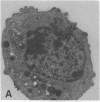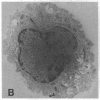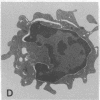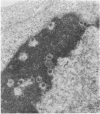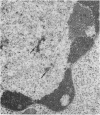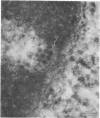Abstract
The human parvovirus (HPV), the cause of transient aplastic crisis of hereditary hemolytic anemia, has been shown to be cytotoxic for erythroid progenitor cells and its presence in these cells demonstrated by morphologic techniques. A relatively pure population of progenitors, isolated by removal of immature erythroid bursts from primary culture, was the target of the virus infection. Infected cells failed to proliferate in secondary culture. Using a monoclonal antibody to HPV, specific fluorescence was demonstrated in a minority of cells 24-48 h after infection with virus. Infected cells examined by electron microscopy showed marked toxic ultrastructural alterations and parvovirus-like particles in crystalline arrays in the nucleus.
Full text
PDF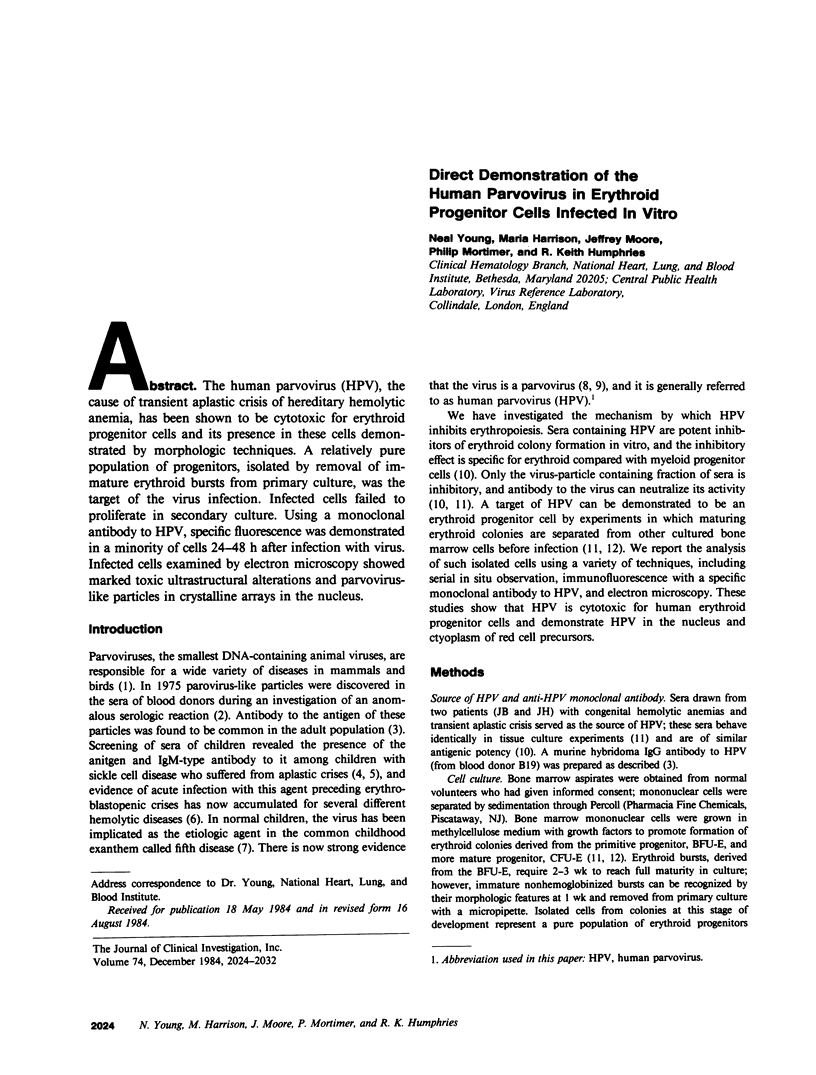
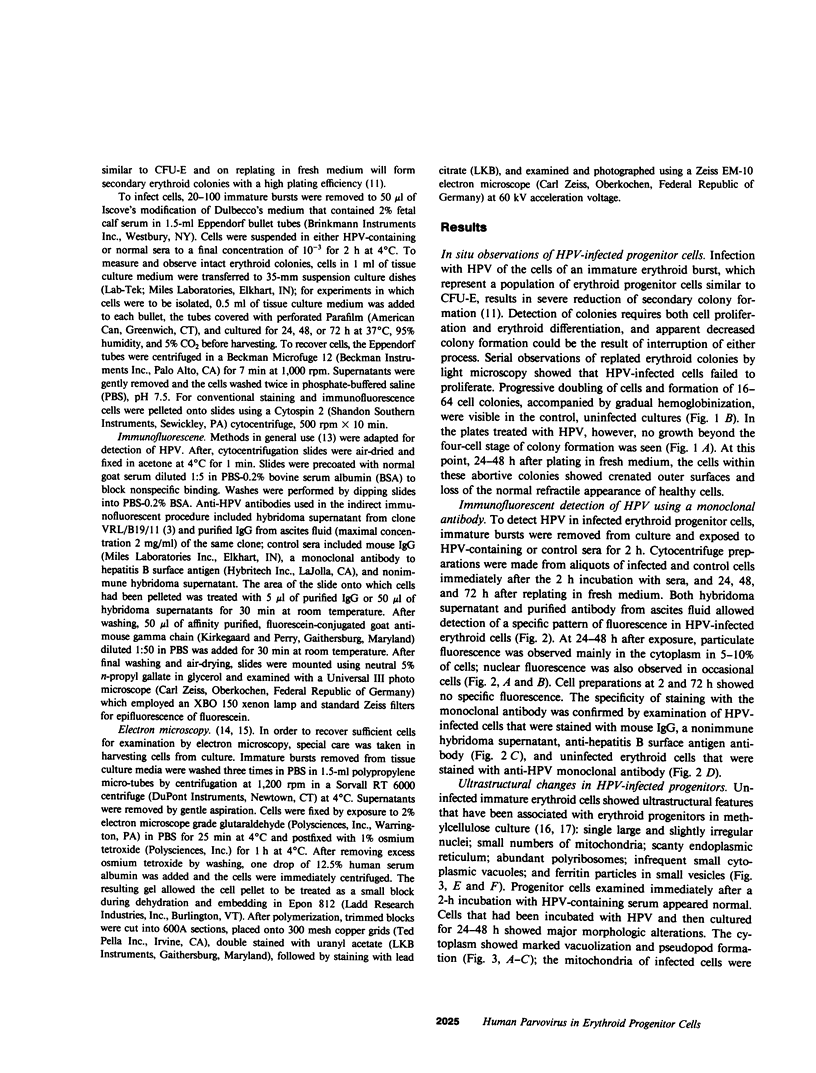
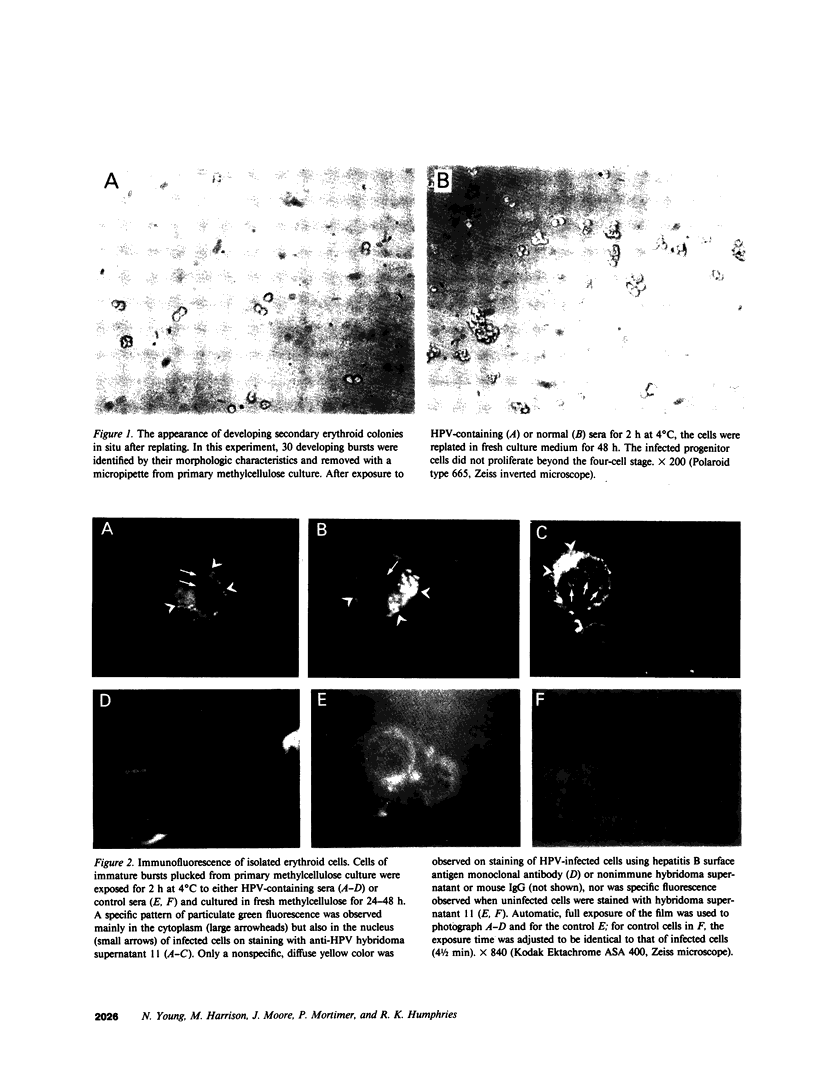

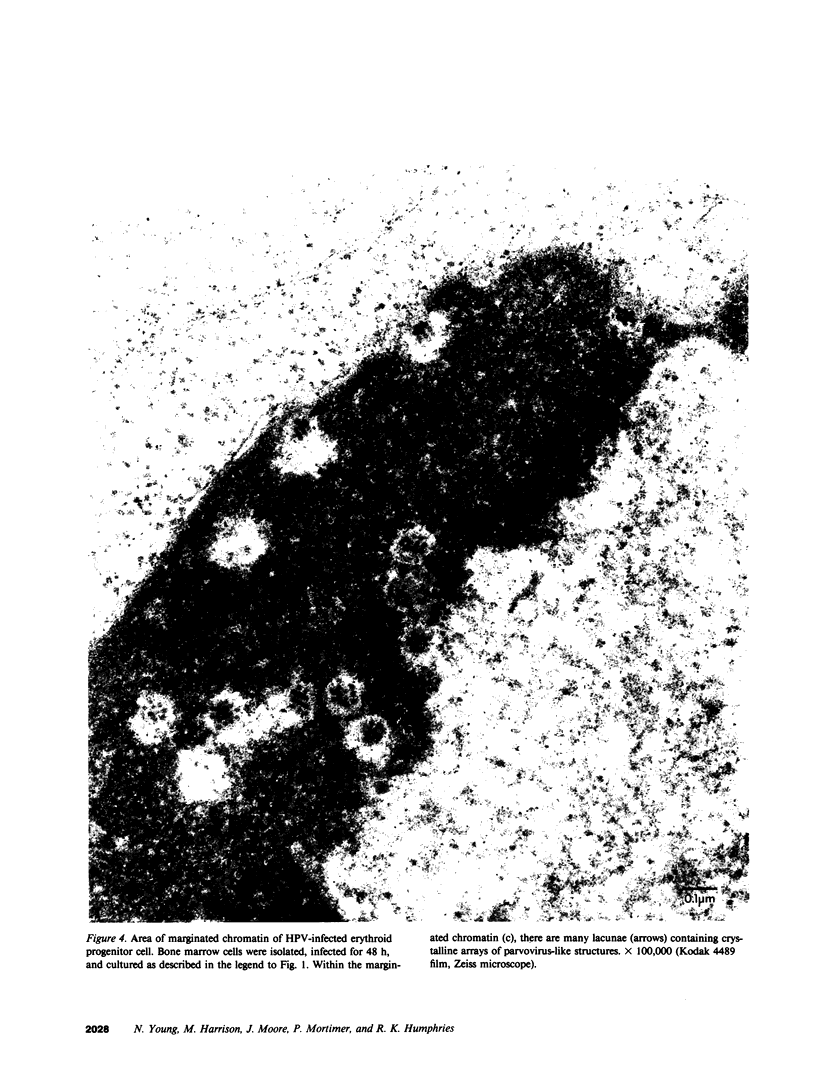
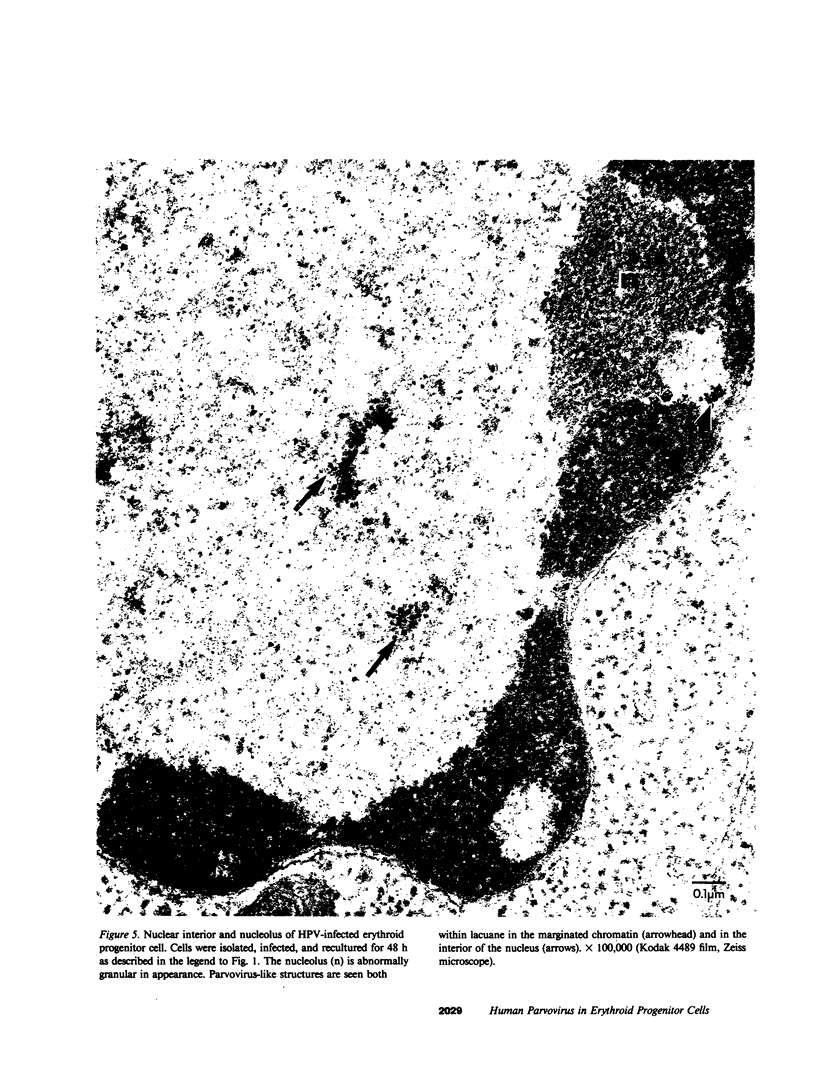
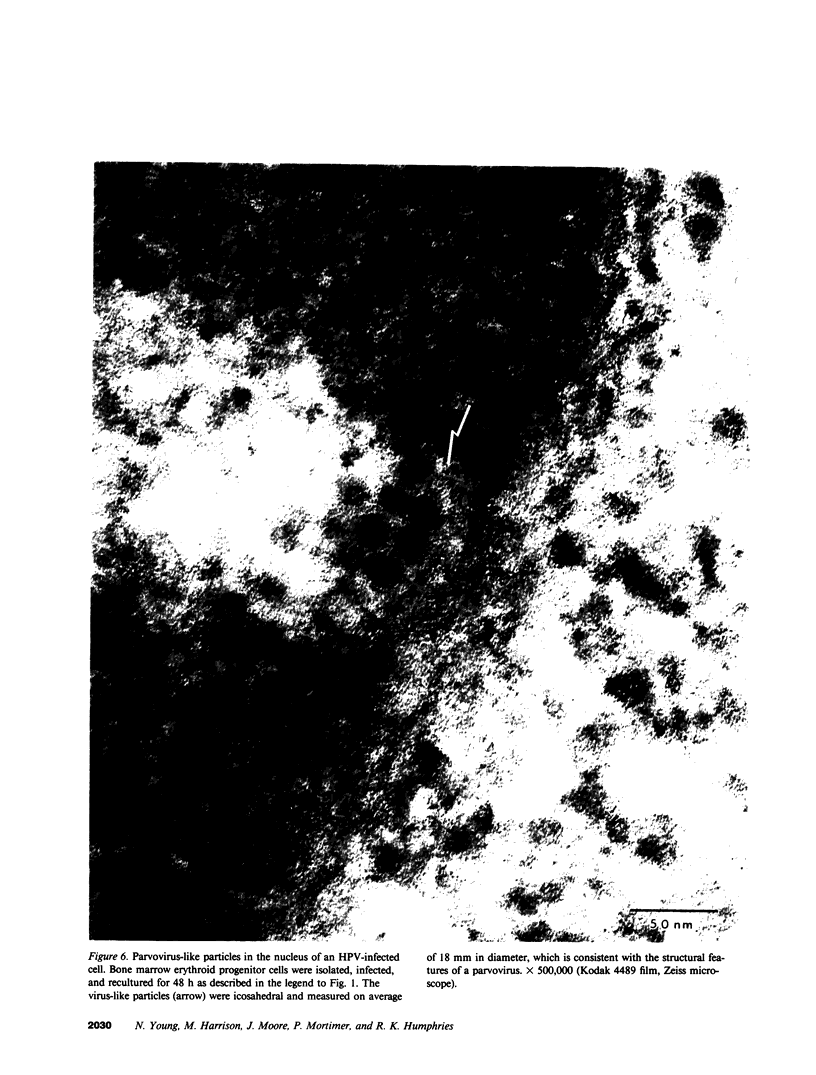
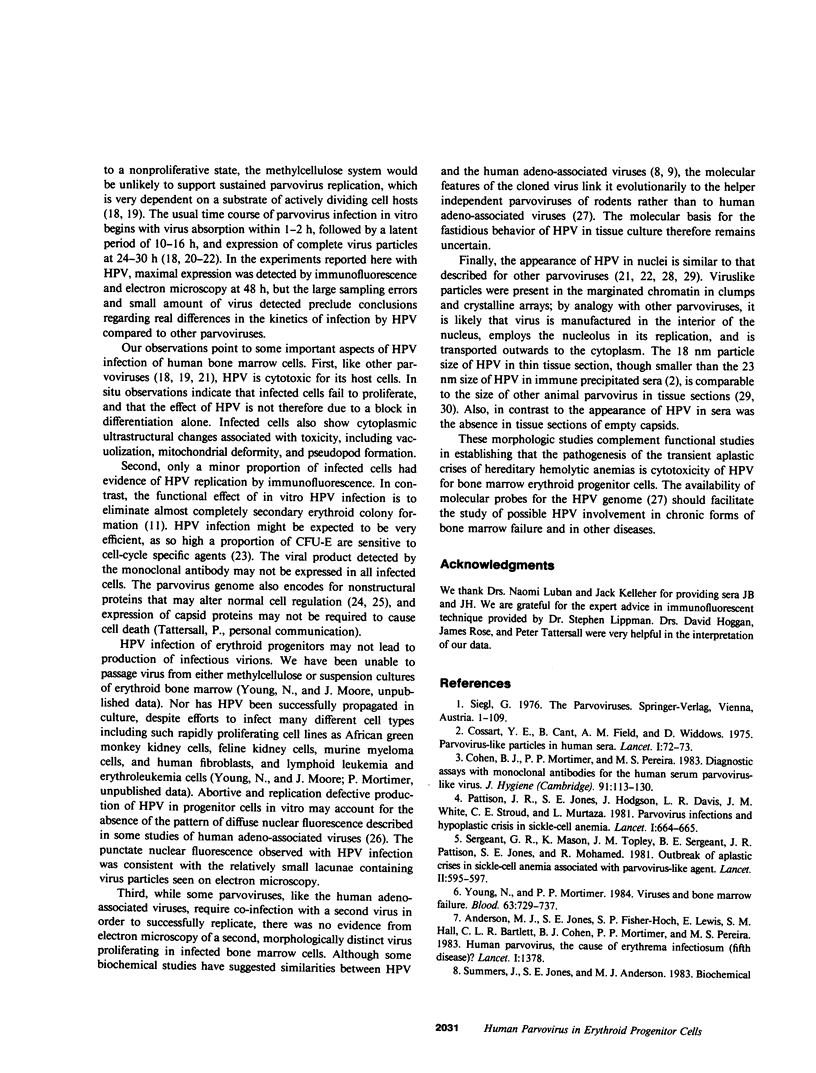
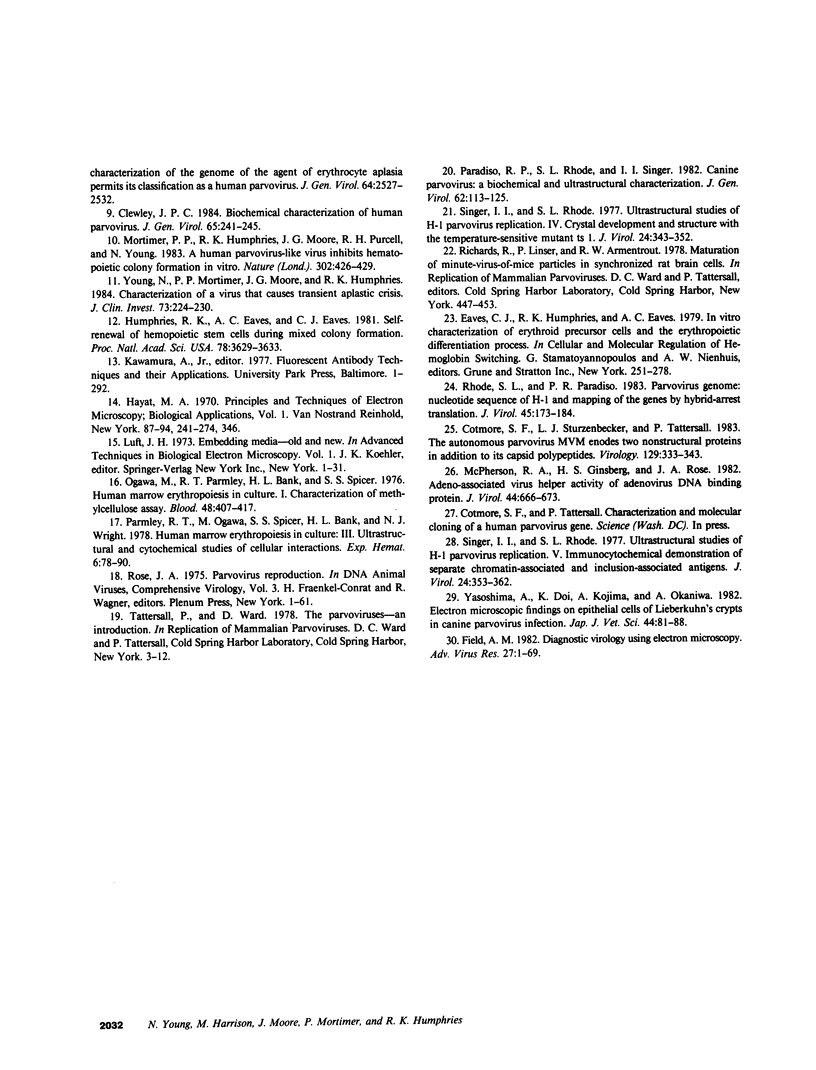
Images in this article
Selected References
These references are in PubMed. This may not be the complete list of references from this article.
- Anderson M. J., Jones S. E., Fisher-Hoch S. P., Lewis E., Hall S. M., Bartlett C. L., Cohen B. J., Mortimer P. P., Pereira M. S. Human parvovirus, the cause of erythema infectiosum (fifth disease)? Lancet. 1983 Jun 18;1(8338):1378–1378. doi: 10.1016/s0140-6736(83)92152-9. [DOI] [PubMed] [Google Scholar]
- Clewley J. P. Biochemical characterization of a human parvovirus. J Gen Virol. 1984 Jan;65(Pt 1):241–245. doi: 10.1099/0022-1317-65-1-241. [DOI] [PubMed] [Google Scholar]
- Cohen B. J., Mortimer P. P., Pereira M. S. Diagnostic assays with monoclonal antibodies for the human serum parvovirus-like virus (SPLV). J Hyg (Lond) 1983 Aug;91(1):113–130. doi: 10.1017/s0022172400060095. [DOI] [PMC free article] [PubMed] [Google Scholar]
- Cossart Y. E., Field A. M., Cant B., Widdows D. Parvovirus-like particles in human sera. Lancet. 1975 Jan 11;1(7898):72–73. doi: 10.1016/s0140-6736(75)91074-0. [DOI] [PubMed] [Google Scholar]
- Cotmore S. F., Sturzenbecker L. J., Tattersall P. The autonomous parvovirus MVM encodes two nonstructural proteins in addition to its capsid polypeptides. Virology. 1983 Sep;129(2):333–343. doi: 10.1016/0042-6822(83)90172-1. [DOI] [PubMed] [Google Scholar]
- Field A. M. Diagnostic virology using electron microscopic techniques. Adv Virus Res. 1982;27:1–69. doi: 10.1016/S0065-3527(08)60432-7. [DOI] [PMC free article] [PubMed] [Google Scholar]
- Humphries R. K., Eaves A. C., Eaves C. J. Self-renewal of hemopoietic stem cells during mixed colony formation in vitro. Proc Natl Acad Sci U S A. 1981 Jun;78(6):3629–3633. doi: 10.1073/pnas.78.6.3629. [DOI] [PMC free article] [PubMed] [Google Scholar]
- McPherson R. A., Ginsberg H. S., Rose J. A. Adeno-associated virus helper activity of adenovirus DNA binding protein. J Virol. 1982 Nov;44(2):666–673. doi: 10.1128/jvi.44.2.666-673.1982. [DOI] [PMC free article] [PubMed] [Google Scholar]
- Mortimer P. P., Humphries R. K., Moore J. G., Purcell R. H., Young N. S. A human parvovirus-like virus inhibits haematopoietic colony formation in vitro. 1983 Mar 31-Apr 6Nature. 302(5907):426–429. doi: 10.1038/302426a0. [DOI] [PubMed] [Google Scholar]
- Ogawa M., Parmley R. T., Bank H. L., Spicer S. S. Human marrow erythropoiesis in culture. I. Characterization of methylcellulose colony assay. Blood. 1976 Sep;48(3):407–417. [PubMed] [Google Scholar]
- Paradiso P. R., Rhode S. L., 3rd, Singer I. I. Canine parvovirus: a biochemical and ultrastructural characterization. J Gen Virol. 1982 Sep;62(Pt 1):113–125. doi: 10.1099/0022-1317-62-1-113. [DOI] [PubMed] [Google Scholar]
- Parmley R. T., Ogawa M., Spicer S. S., Bank H. L., Wright N. J. Human marrow erythropoiesis in culture: III. Ultrastructural and cytochemical studies of cellular interactions. Exp Hematol. 1978 Jan;6(1):78–90. [PubMed] [Google Scholar]
- Pattison J. R., Jones S. E., Hodgson J., Davis L. R., White J. M., Stroud C. E., Murtaza L. Parvovirus infections and hypoplastic crisis in sickle-cell anaemia. Lancet. 1981 Mar 21;1(8221):664–665. doi: 10.1016/s0140-6736(81)91579-8. [DOI] [PubMed] [Google Scholar]
- Rhode S. L., 3rd, Paradiso P. R. Parvovirus genome: nucleotide sequence of H-1 and mapping of its genes by hybrid-arrested translation. J Virol. 1983 Jan;45(1):173–184. doi: 10.1128/jvi.45.1.173-184.1983. [DOI] [PMC free article] [PubMed] [Google Scholar]
- Serjeant G. R., Topley J. M., Mason K., Serjeant B. E., Pattison J. R., Jones S. E., Mohamed R. Outbreak of aplastic crises in sickle cell anaemia associated with parvovirus-like agent. Lancet. 1981 Sep 19;2(8247):595–597. doi: 10.1016/s0140-6736(81)92739-2. [DOI] [PubMed] [Google Scholar]
- Siegl G. The parvoviruses. Virol Monogr. 1976;15:1–109. [PubMed] [Google Scholar]
- Singer I. I., Rhode S. L., 3rd Ultrastructural studies of H-1 parvovirus replication. IV. Crystal development and structure with the temperature-sensitive mutant ts1. J Virol. 1977 Oct;24(1):343–352. doi: 10.1128/jvi.24.1.343-352.1977. [DOI] [PMC free article] [PubMed] [Google Scholar]
- Singer I. I., Rhode S. L., 3rd Ultrastructural studies of H-1 parvovirus replication. V. Immunocytochemical demonstration of separate chromatin-associated and inclusion-associated antigens. J Virol. 1977 Oct;24(1):353–362. doi: 10.1128/jvi.24.1.353-362.1977. [DOI] [PMC free article] [PubMed] [Google Scholar]
- Summers J., Jones S. E., Anderson M. J. Characterization of the genome of the agent of erythrocyte aplasia permits its classification as a human parvovirus. J Gen Virol. 1983 Nov;64(Pt 11):2527–2532. doi: 10.1099/0022-1317-64-11-2527. [DOI] [PubMed] [Google Scholar]
- Yasoshima A., Doi K., Kojima A., Okaniwa A. Electron microscopic findings on epithelial cells of Lieberkühn's crypts in canine parvovirus infection. Nihon Juigaku Zasshi. 1982 Feb;44(1):81–88. doi: 10.1292/jvms1939.44.81. [DOI] [PubMed] [Google Scholar]
- Young N. S., Mortimer P. P., Moore J. G., Humphries R. K. Characterization of a virus that causes transient aplastic crisis. J Clin Invest. 1984 Jan;73(1):224–230. doi: 10.1172/JCI111195. [DOI] [PMC free article] [PubMed] [Google Scholar]
- Young N., Mortimer P. Viruses and bone marrow failure. Blood. 1984 Apr;63(4):729–737. [PubMed] [Google Scholar]











